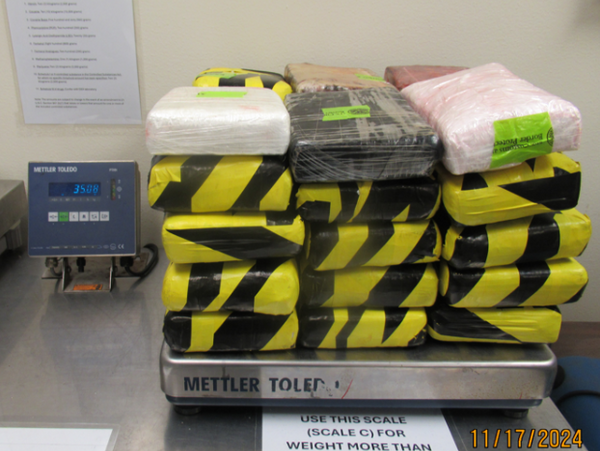
For many, sculpting stronger glutes is high on the list of summer body goals. And whilst the aesthetic perks of honing this group of lower body muscles, (rounder curves and a more pert silhouette), are a big draw, the benefits don’t end there. Strengthening the glute muscles can also help to protect your lower back, support your knees and even improve your posture.
The glutes, (short for gluteal muscles) are the largest muscle group in the body. If you spend hours chained to your desk the chances are that your glutes might be weaker than you’d like, and that’s where the new ‘glute diet’ comes in. The muscle-boosting nutrition trend which has swept through social media, claims it’s the solution to a better-looking behind as a result of focusing on foods that grow and support glute development.
Of course, no diet works in isolation - when combined with targeted exercise, the effects of any eating plan can be significantly amplified, and that’s where advocates say the diet really shines. The concept of the viral eating style is to supply the body with all the essential nutrients it needs to support both skin structure and muscle growth through a finely tuned intake of macronutrients, plus vitamins and minerals. When this balanced diet is paired with a glute-enhancing training plan you can expect a firmer, smoother and more toned behind.
Foods to eat and those to avoid
As you’d probably expect, all the usual dietary culprits like ultra-processed ingredients like those found in deli meats, pastries, biscuits and ready meals, fizzy drinks and alcohol are all off the menu, in favour of healthier alternatives. The standout macronutrients in the bum-boosting plan include protein sources (eggs, tofu, chicken) and healthy fats (such as avocado, salmon, nuts and seeds and olive oil) with small amounts of complex carbohydrates (including brown rice and sweet potato).

But why are these macronutrients so important? A variety of protein sources is required to form complete proteins which contain all the essential amino acids needed for muscle repair and growth. Healthy fats are needed to regulate hormone production and aid nutrient absorption whilst small amounts of complex carbohydrates to help maintain stable blood glucose levels.
Another key player in the glute diet is collagen. This structural protein (found in animal products like bone broth and the skin of chicken and pork) supports connective tissue elasticity which helps to support skin suppleness and smoothness. However, in order to synthesise collagen, increasing your intake of vitamin C is essential and without it, the body can’t produce or maintain healthy collagen levels. That’s why it’s important to include good sources of vitamin C in your daily diet such as kiwi fruit, strawberries, peppers, oranges and lemons.
Collagen helps to support skin suppleness and smoothness, but without vitamin C it won’t work as effectively
Electrolytes - minerals which help to regulate the fluid levels in your body are also an important component of the glute diet. Two key electrolytes, magnesium and potassium play a vital role in muscle function, hydration and exercise recovery. These minerals can be found in a range of foods such as banana, avocado, nuts and seeds.
How to get started on the glute diet
The glute diet advocates recommend eating three nutrient-dense meals per day supplemented with two snack and coupling this with a mini glute-focused workout routine. But does it actually work in practice? Whilst there are certainly some good aspects to the glute diet - like the emphasis on balancing macronutrients and adding in vitamin and mineral rich-foods, the eating style doesn’t take into account the fact that results can vary from person to person based on individual factors including age to activity levels and lifestyle. This means that it’s more sensible to view the diet as a well-rounded eating plan that focuses on nutrients rather a magic solution.
An example day on the glute diet
Breakfast: Protein smoothie made with protein powder, milk, banana, spinach and strawberries.
Snack: 2 seeded oatcakes with guacamole with a cup of bone broth.
Lunch: Tofu stir-fry
Snack: 1 orange and 1 tbsp almonds
Dinner: Grilled salmon fillet with roasted peppers and brown rice
The ultimate PT secrets: how to boost your glutes
Personal trainer Emily Cleary on the glute diet and her 3 top bum-firming moves
‘Exercise builds muscle and burns fat, and by focusing on a balanced diet and performing specific glute-strengthening reps, you can enhance results. This approach ensures that you're not only building muscle mass in the gluteal region but also reducing overall body fat, which can improve the appearance of firmness and tone. Strong glutes equal a strong body, and there are plenty of glute-specific exercises you can do at home with no equipment.
My quick hack for firmer glutes? Incorporate weights into your workout and after exercise, massage the area with a tightening body oil to smooth the skin and encourage blood flow to the area.’
Cleary’s 10-minute bum toning workout
Do these three moves three times per week for best results
Squats (x 30 reps)
Single leg kickback (45 seconds on each leg)
Alternate lunge (x 20 reps on each side)







